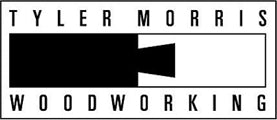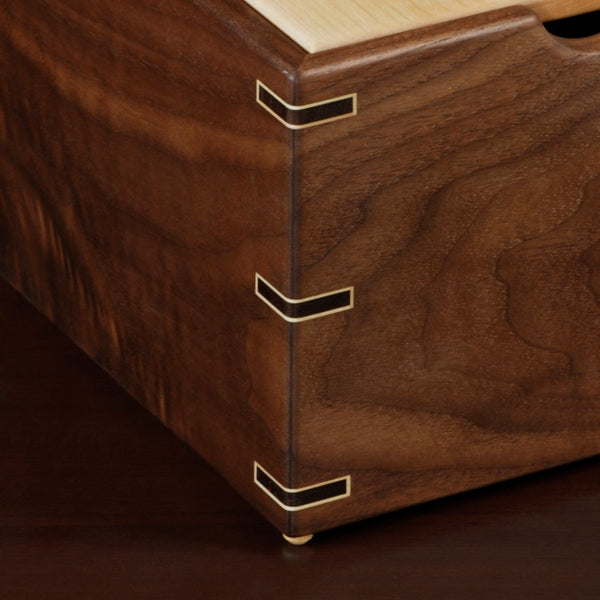Making a wood box with continuous grain shows that the maker selected the box parts with care and pride. In this case, "continuous grain" means that the box sides consist of one board and the parts are assembled in order -allowing the grain pattern to wrap around the corners. At Tyler Morris Woodworking, we have created a very simple jig for organizing this task and we feel that it’s worthy of note.
We have been making wood recipe boxes for 3x5 and 4x6 index cards since 1998. We typically make batches of about 200 boxes. There are two main reasons we choose to make our boxes (specifically, the mitered box sides) with continuous grain.First, as previously mentioned, the use of continuous grain is the best method to choose parts that match in color and grain pattern. Second, it allows us to label and organize our (800!) parts.
We start by choosing a 32" section of a board that's free of defects and is large enough to yield one box. Then, we dimension the board to final thickness (with the widebelt sander) and final width (power fed on the tablesaw using a glue line rip blade.) Also, we rough cut the board to length; based on adding up the part lengths plus about 1/8” per miter cut.
For the next step, we have created a very simple jig using 1/8” thick Plexiglas. The B, L, F and R represent the "continuous grain" sequence; back, left, front and right. We have cut out four "windows" allowing us to mark our parts. First, we choose the best side of the board and then, in pencil, we mark "XY", "X" representing the box part and "Y" representing the box number. We have chosen the "back-right" corner to be the joint that does not technically have wrap-around grain. However, the color will match well at this joint. Also, we make our markings toward the top of the box, denoting "this side up." Then, we rough cut the parts about 3/16" longer than the mitered length. The rough cut marks are noted on our Plexiglas jig as black lines.
As we are rough cutting all the boards to length we easily separate the parts into four stacks. The different stacks go through unique drilling, sawing and routing operations. When all the parts are complete, we match them back up according to their box number, then assemble.
There is only one problem with this system. This method will result in more waste because we only use 32” long, defect-free (complete box length) wood, instead of 8” long, defect-free (part length) sections. But this issue is minor compared to the tremendous benefit of building a box with continuous grain and uniform color from one beautiful board.



